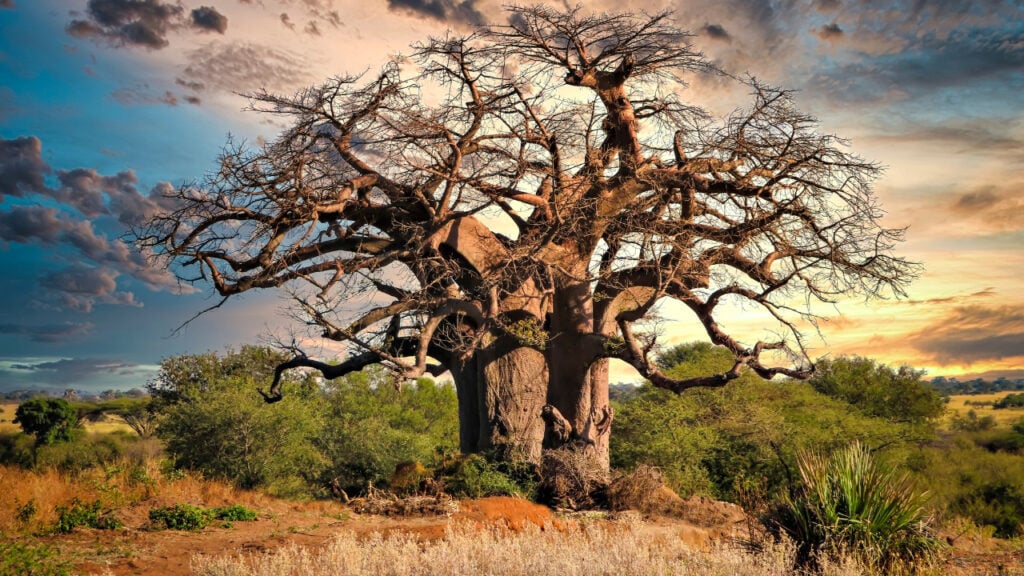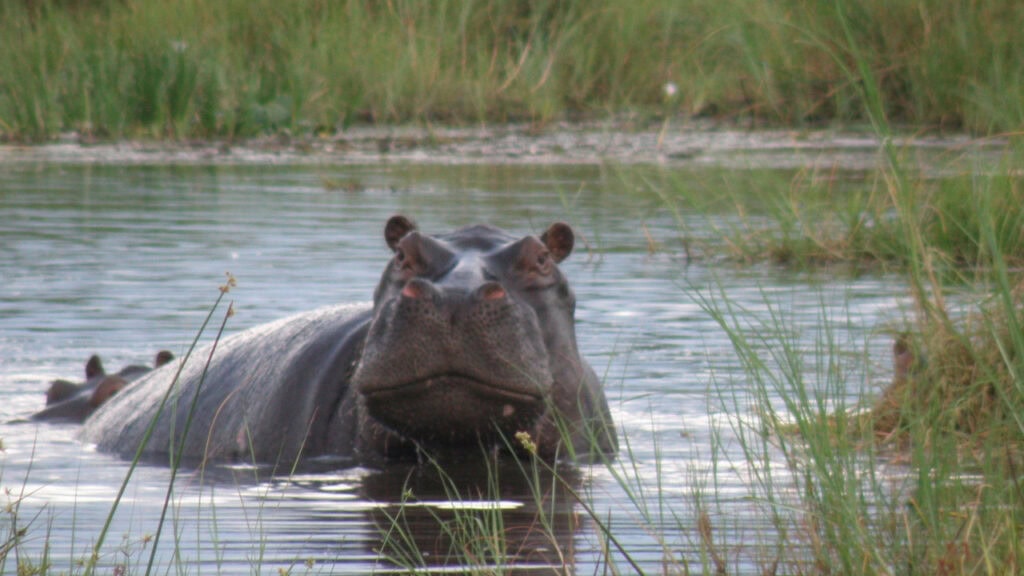Situated in southern Africa, Zambia is home to a rich diversity of plant life. The species here have adapted to the country’s varied landscapes, which include lush riverine areas, arid savannas, and dense woodlands. Several of Zambia’s plant species are found nowhere else in the world and are protected by conservation efforts.
Join us as we take a closer look at 5 of the most unique plants you’ll find in Zambia.
1. Baobab Tree
This iconic tree looks as if it has been planted upside down, with branches that resemble a root system. Famous for its enormous trunk, which can reach a diameter of up to 10 meters, Baobabs are among the longest-living trees on earth, with some individuals reaching an age of over 6000 years.

The baobab tree is often referred to as the “Tree of Life” for its ability to store thousands of litres of water in its bulbous trunk, which provides a valuable water source for both wildlife and humans. Baobab fruit, sometimes called “monkey bread”, is rich in vitamin C and is prized for its culinary and medicinal uses.
2. Zambezi Teak
Zambezi Teak is a dense and heavy hardwood with a distinctive grain and attractive red-brown colour. Prized in the timber industry for its durability and natural resistance to pests and decay, this wood is sought after for flooring and high-quality furniture construction, although it’s also been used for railway sleepers.
These trees can grow to be quite large, reaching heights of up to 100 feet. After flowering and fertilisation, they produce woody pods filled with seeds, which are a food source for animals. Thanks to its commercial value, Zambezi teak is at risk of over-exploitation, but sustainable management practices are being encouraged.
3. Kafue Lily
This striking plant features long strap-like leaves and large white or pink trumpet-shaped flowers that emit a sweet fragrance. Kafue lilies are a popular ornamental plant in Zambia, and you’ll find them growing in many gardens.
Beyond their aesthetic appeal, these plants are also used in traditional medicine to treat rashes, burns, and respiratory issues such as coughs and chest congestion.
The Kafue lily grows from large, fleshy bulbs that are rich in nutrients and help the plant survive during harsh conditions. In some regions of Zambia, the plant has cultural and traditional significance, with its bulb prized in local customs.
4. Hippopotamus Grass
This large aquatic plant features broad, floating leaves that form dense mats on water surfaces. It’s an important food source for hippos, especially during the dry season when other vegetation is in low supply.
Thanks to its growth pattern and density, this plant is a valuable part of wetland ecosystems, providing breeding areas and shelter for a variety of aquatic species, including fish, amphibians, and invertebrates.

Hippopotamus grass can be found in various wetland habitats, including swamps, lakes, rivers, and slow-moving bodies of water. This plant also helps improve water clarity and reduce the risk of algal blooms by absorbing excess nutrients from the water.
5. Miombo Trees (Various Species)
Miombo trees form one of the most extensive and diverse woodlands on the African continent. They play an important ecological function by providing habitats and sustenance to a wide variety of wildlife, such as elephants, antelopes, and a number of bird species.
The trees have adapted to life in dry and seasonal climates and contribute to soil fertility and water retention, supporting the wildlife diversity in the ecosystems they inhabit. Miombo woodland is Zambia’s dominant vegetation type, covering about two thirds of the country and providing essential resources for local communities.
Zambia’s plant life is not only ecologically important, but also plays a critical role in sustaining local communities. From food and medicine to building materials and cultural uses, these fascinating plants represent just a fraction of the country’s rich botanical diversity.
Explore them all on a luxury tailor-made safari in Zambia. Speak to a safari expert at Discover Africa to start planning your Zambian adventure today.
Author: Devryn Panaino
Published:
Last Update:
Part of the Zambia Safari Collection